Good teaching cannot be reduced to technique but is rooted in the identity and integrity of the teacher. (Palmer, 1997)
This year as I began my own journey working with the graduating class from the School of Education at Bishop’s University, I had to find ways to tap into what I already understood about teaching and the profession they were preparing to enter and develop means of pushing them to think deeply about the teacher landscape. In our few weeks together, we discussed a multitude of topics including inspiration, leadership, global education and teacher identity. We read, we reflected, we discussed and then we wrote; only to start the process again.
It was here that I came across this thought-provoking quote by Parker J. Palmer from his inspirational book “The Courage to Teach”
Good teaching takes myriad forms but good teachers share one trait: they are authentically present in the classroom, in community with their students and their subject. They possess “a capacity for connectedness” and are able to weave a complex web of connections between themselves, their subjects, and their students, helping their students weave a world for themselves. The connections made by good teachers are held not in their methods but in their hearts — the place where intellect, emotion, spirit, and will converge in the human self — supported by the community that emerges among us when we choose to live authentic lives. (Palmer, 1997)
These teacher candidates, who were sitting on the cusp of pre and in service, sat quietly in that large academic room and wrote about their hopes and fears of entering the profession; of what they would bring to their future students, and how they would strive to make a difference. As they shared their commitment for the future that would soon be upon them, I worried about how they would be able to protect themselves in the harsh environment they would surely encounter at times. What could they wear to repel some of the thorns and barbs that would tear at the hearts they wore on their sleeves? What could I offer to shield them and their developing fragile teacher identity? How could they enter this landscape secure and confident?
As luck would have it, I came upon an interesting teacher, Tiffany Poirier, who herself had been inspired by Palmer’s book and from his writing had created just what I needed to safeguard my students: The Teaching Coat. In essence, it is a wearable teaching philosophy. A way to represent all those ideals that you believe in and the values that you hold and bring with you into the classroom every day. As Poirier writes, “My Teaching Coat creates around me a sense of place. In any classroom, in any school, I am at home with myself – wearing the wisdom of my inner teacher.” She continues to build the sense of purpose this professional garment fosters by stating, “I am not afraid to show my true colours, to draw students in and say ‘This is where I have been and what I’m about.’”
I would like to share with you now a few examples of Teaching Coats created by the graduating pre-service teacher community at Bishop’s. They as always, surprised me, moved me and left me confident that our future students would be in the hands of teachers who valued the role they would play in the lives of so many young people.
Miranda McGie writes: I wanted my Drama/Teaching coat to be a cape…costumes help actors change who they are; it reinforces character identity…I do know what symbols, quotes I would want on my cape. Images like a director’s chair, megaphone, and clapperboard are essential…I have included a few Shakespeare quotes because I believe they would help provide my future students with a sense of devotion…“To thine own self be true” and “Love all, trust a few”, “do wrong to no one”. I would put all these quotes in the inside of the cape, so when I move around the classroom, students will see these quotes as I lift my arms around.
Josh Quirion writes: My coat would consist of a multitude of pockets…Sure it would rest on my shoulder like a conventional coat, but its primary purpose would be to place an infinity of pockets at my disposal. It would be a long trench coat, to maximize pocket space obviously, and it would be rather modest on the outside, beige, not pretentious…I wear it like a magician, always ready to pull a trick out of my pocket or like a witch doctor, always prepared to produce traditional medicine from my pocket, or like a merchant in Time Square, prepared to negotiate a bargain with a customer.
Amanda Gautrey writes: On the left sleeve, I have listed words that describe my students and/or the classroom setting I wish to create. I want to create life-long learners in my students who are excited about school and more importantly, about learning…In the sleeve, I have placed a pink paper which says, “tricks, activities, plan A, B and sometimes C! This simply implies that we have to have many tricks up our sleeves and many other backup plans and ideas. Most of the time, lessons do not go as we have them planned and it is important for us to be able to adapt to situations and improvise in order to maintain a good learning environment.
Why not take the time to recharge and listen to the wisdom of your inner teacher. What might your own Teaching Coat look like? What words, images, symbols and inspirations might you add and why?
Resources for future reading:
Palmer, Parker J. 1997. The Courage to Teach: Exploring the Inner Landscape of a Teacher’s Life. San Francisco: Jossey-Bass.

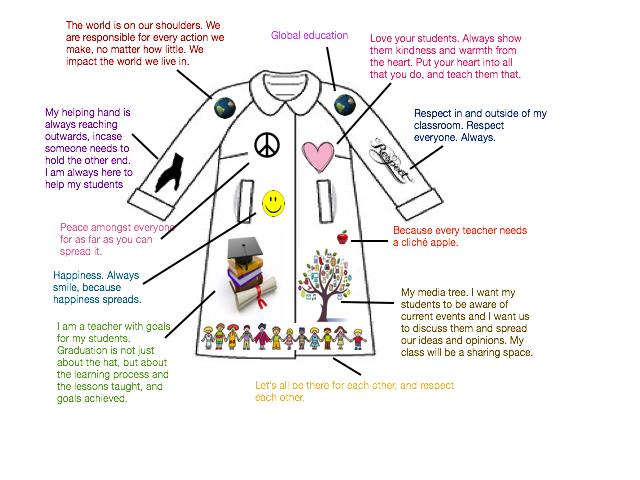
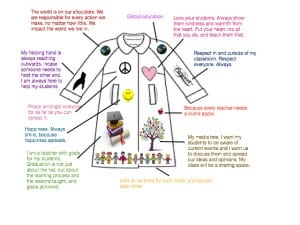
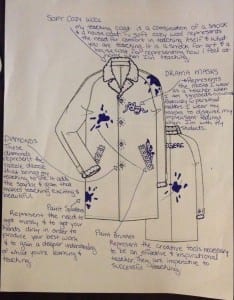

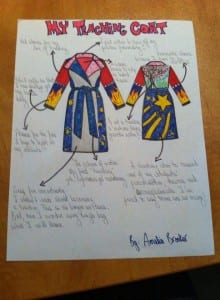


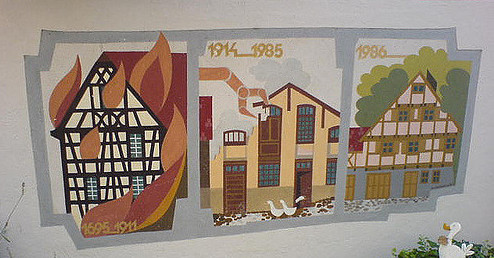
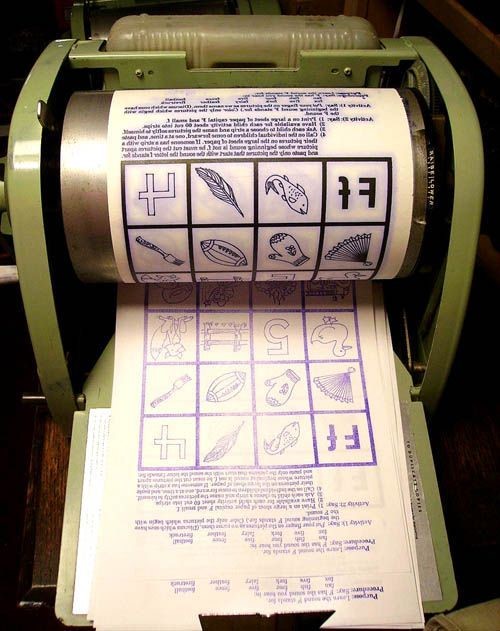
An innovative idea, Melanie. Your students seemed to really reflect on their own talents and concerns in a way that we don’t often think about when we’re in the field.
What beautiful ideas here in these Teaching Coats! Thank you so much, Melanie, for sharing this project with your teacher candidates and for creating a safe space for this kind of reflection–and for giving us this blog post as a window into your process. My heart leapt and I was so delighted when I came across your article! It feels so special and meaningful to see how this project is growing and finding a home with others, and it’s an honour to have contributed it in any way. I’m wishing you all the very best in your journeys–thank you all for your courage and creativity!